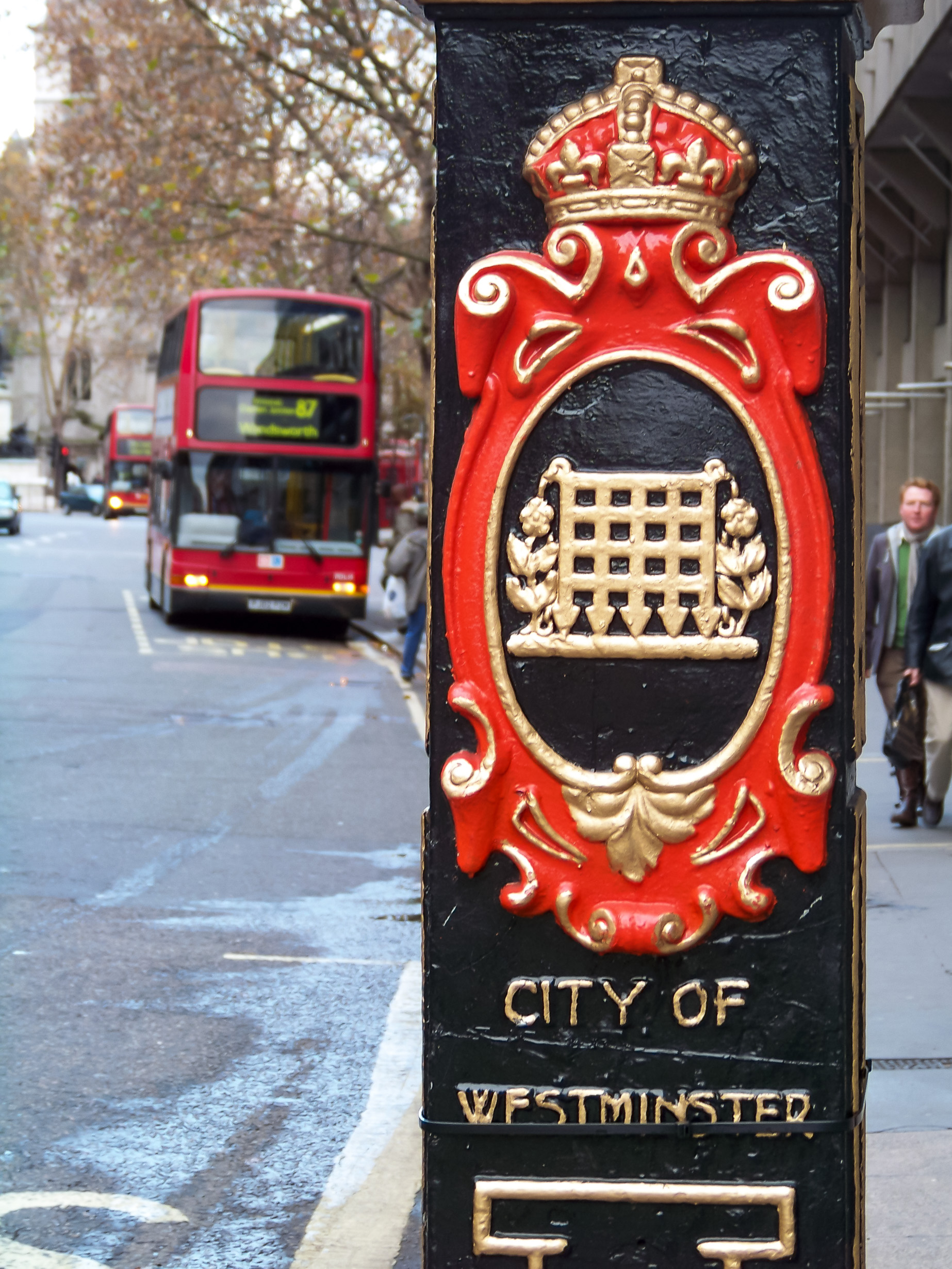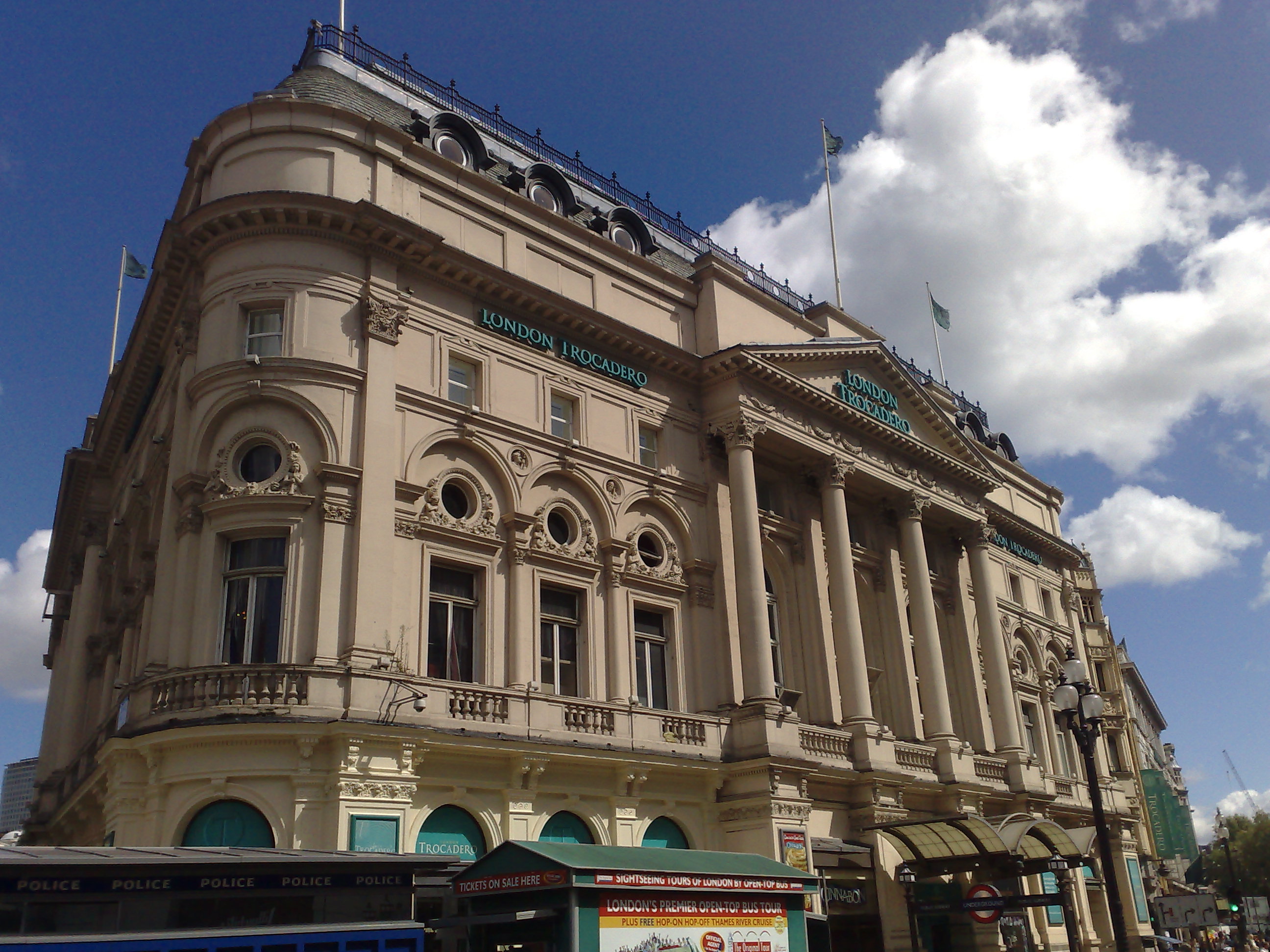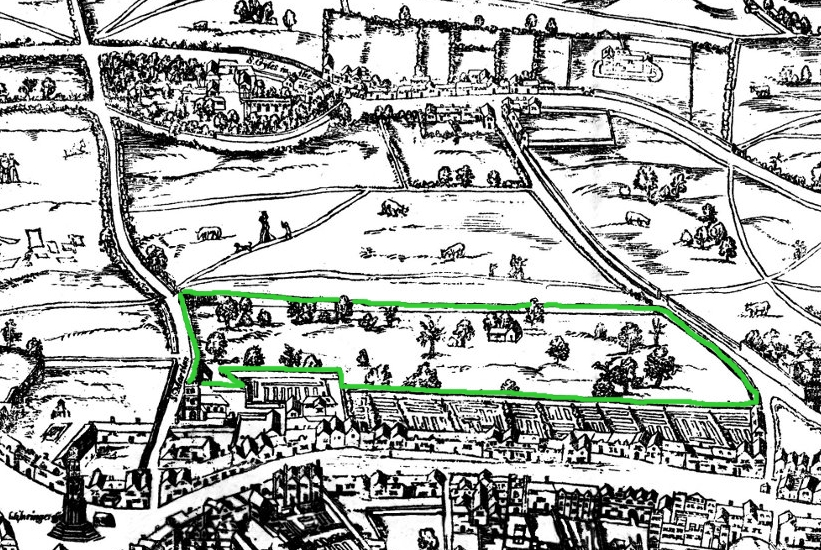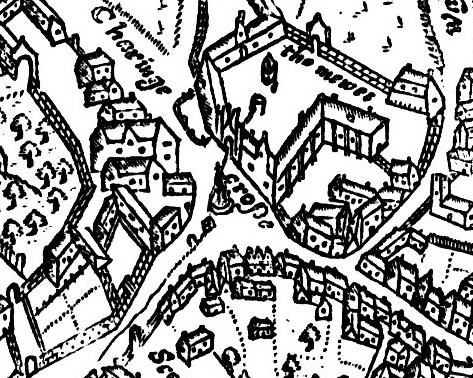|
Leicester Fields
Leicester Square ( ) is a pedestrianised square in the West End of London, England. It was laid out in 1670 as Leicester Fields, which was named after the recently built Leicester House, itself named after Robert Sidney, 2nd Earl of Leicester. The square was originally a gentrified residential area, with tenants including Frederick, Prince of Wales and the artists William Hogarth and Joshua Reynolds. It became more down-market in the late 18th century as Leicester House was demolished and retail developments took place, becoming a centre for entertainment. Several major theatres were built in the 19th century, which were converted to cinemas towards the middle of the next. Leicester Square is the location of nationally significant cinemas such as the Odeon Leicester Square, Empire, Leicester Square, which are often used for film premieres (and the now closed Odeon West End). The nearby Prince Charles Cinema is known for its screenings of cult films and marathon film runs. The ... [...More Info...] [...Related Items...] OR: [Wikipedia] [Google] [Baidu] |
City Of Westminster
The City of Westminster is a City status in the United Kingdom, city and London boroughs, borough in Inner London. It is the site of the United Kingdom's Houses of Parliament and much of the British government. It occupies a large area of central Greater London, including most of the West End of London, West End. Many London landmarks are within the borough, including Buckingham Palace, Westminster Abbey, Whitehall, Westminster Cathedral, 10 Downing Street, and Trafalgar Square. Westminster became a city in 1540, and historically, it was a part of the ceremonial county of Middlesex. Its southern boundary is the River Thames. To the City of Westminster's east is the City of London and to its west is the Royal Borough of Kensington and Chelsea. To its north is the London Borough of Camden. The borough is divided into a number of localities including the ancient political district of Westminster; the shopping areas around Oxford Street, Regent Street, Piccadilly and Bond Street ... [...More Info...] [...Related Items...] OR: [Wikipedia] [Google] [Baidu] |
Prince Charles Cinema
The Prince Charles Cinema (PCC) is a repertory cinema located in Leicester Place, 50 yards north of Leicester Square in the West End of London. It shows a rotating programme of cult, arthouse, and classic films alongside recent Hollywood releases – typically more than ten different films a week on two screens (300 velvet seats downstairs and 104 high back leather seats upstairs). It also hosts a sing-a-long version of ''The Sound of Music'', as well as ''The Rocky Horror Picture Show'' and ''The Room''. The cinema has achieved a cult status amongst fans, and is the only independent cinema in the West End. History Constructed between 1961 and 1962, the building was built by Richard Costain Limited for Alfred Esdaile and designed by Carl Fisher and Associates. The building originally functioned as a theatre with a distinctive 'satellite dish' curve to the floor of the stalls, meaning that audience members are sat at an upwards angle as they face the stage. After a short peri ... [...More Info...] [...Related Items...] OR: [Wikipedia] [Google] [Baidu] |
Coventry Street
Coventry Street is a short street in the West End of London, connecting Piccadilly Circus to Leicester Square. Part of the street is a section of the A4, a major road through London. It is named after the politician Henry Coventry, secretary of state to Charles II. The street was constructed in 1681 for entertainment and retail purposes, and acquired a shady character with numerous gambling houses and a reputation for prostitution. This changed during the late 19th century, with the establishment of several music hall outlets including the London Pavilion, the Prince of Wales Theatre and the Trocadero Music Hall. In the 20th century, it became known for its high-traffic restaurants, including the first J. Lyons and Co. and the first premises of the seafood restaurant Scott's. It was also popular for its nightclubs, and was the original location of the Flamingo Club. Geography Coventry Street is one-way for motor traffic, running eastbound. It is around long and runs eas ... [...More Info...] [...Related Items...] OR: [Wikipedia] [Google] [Baidu] |
London Underground
The London Underground (also known simply as the Underground or by its nickname the Tube) is a rapid transit system serving Greater London and some parts of the adjacent ceremonial counties of England, counties of Buckinghamshire, Essex and Hertfordshire in England. The Underground has its origins in the Metropolitan Railway, the world's first underground passenger railway. Opened on 10 January 1863, it is now part of the Circle line (London Underground), Circle, District line, District, Hammersmith & City line, Hammersmith & City and Metropolitan lines. The first line to operate underground electric locomotive, electric traction trains, the City & South London Railway in 1890, is now part of the Northern line. The network has expanded to 11 lines, and in 2020/21 was used for 296 million passenger journeys, making it List of metro systems, one of the world's busiest metro systems. The 11 lines collectively handle up to 5 million passenger journeys a day and serve 272 ... [...More Info...] [...Related Items...] OR: [Wikipedia] [Google] [Baidu] |
Cambridge Circus, London
Cambridge Circus is the partly pedestrianised intersection where Shaftesbury Avenue crosses Charing Cross Road on the eastern edge of Soho, central London. Side-streets Earlham, West, Romilly and Moor streets also converge at this point. It is halfway between Tottenham Court Road station, Oxford Street (at St Giles Circus) and the centre of Leicester Square, which is southwest of Charing Cross Road via Cranborne Street. The Circus is fronted by listed Georgian and Victorian buildings. Of these, the Palace Theatre has the widest façade; three bars and three fast food outlets, unusually, occupy the ground floors of the others. Side-street approaches Earlham Street specialises in fashion; Moor Street in cafés, leading to the Prince Edward Theatre. West Street has St Martin's Theatre and leading restaurant: The Ivy (popular with celebrities and successful artists) and until 2019 L'Atelier de Joël Robuchon (London). Buildings The Palace Theatre is on the west side of the junc ... [...More Info...] [...Related Items...] OR: [Wikipedia] [Google] [Baidu] |
Covent Garden
Covent Garden is a district in London, on the eastern fringes of the West End, between St Martin's Lane and Drury Lane. It is associated with the former fruit-and-vegetable market in the central square, now a popular shopping and tourist site, and with the Royal Opera House, itself known as "Covent Garden". The district is divided by the main thoroughfare of Long Acre, north of which is given over to independent shops centred on Neal's Yard and Seven Dials, while the south contains the central square with its street performers and most of the historical buildings, theatres and entertainment facilities, including the London Transport Museum and the Theatre Royal, Drury Lane. The area was fields until briefly settled in the 7th century when it became the heart of the Anglo-Saxon trading town of Lundenwic, then abandoned at the end of the 9th century after which it returned to fields. By 1200 part of it had been walled off by the Abbot of Westminster Abbey for use as arable l ... [...More Info...] [...Related Items...] OR: [Wikipedia] [Google] [Baidu] |
Trafalgar Square
Trafalgar Square ( ) is a public square in the City of Westminster, Central London, laid out in the early 19th century around the area formerly known as Charing Cross. At its centre is a high column bearing a statue of Admiral Nelson commemorating the victory at the Battle of Trafalgar. The battle of 21 October 1805, established the British navy's dominance at sea in the Napoleonic Wars over the fleets of France and Spain. The site around Trafalgar Square had been a significant landmark since the 1200s. For centuries, distances measured from Charing Cross have served as location markers. The site of the present square formerly contained the elaborately designed, enclosed courtyard of the King's Mews. After George IV moved the mews to Buckingham Palace, the area was redeveloped by John Nash, but progress was slow after his death, and the square did not open until 1844. The Nelson's Column at its centre is guarded by four lion statues. A number of commemorative statues and sc ... [...More Info...] [...Related Items...] OR: [Wikipedia] [Google] [Baidu] |
Charing Cross Road
Charing Cross Road is a street in central London running immediately north of St Martin-in-the-Fields to St Giles Circus (the intersection with Oxford Street) and then becomes Tottenham Court Road. It leads from the north in the direction of Charing Cross at the south side of Trafalgar Square. It connects via St Martin's Place and the motorised east side of the square. History Charing Cross road was originally two narrow streets in the West End, Crown Street and Castle Street. The development of Regent Street (parallel to the west) in the mid-18th century coincided with not only the building up of great fields west of the area but also Westminster Bridge which was built as central London and the wider estuary's second bridge after more than a century of pressure, in 1750. These pressures therefore congested the north–south axis of the inner West End almost as much as the relieved London Bridge area. Specifically a major increase in traffic occurred around Piccadilly Ci ... [...More Info...] [...Related Items...] OR: [Wikipedia] [Google] [Baidu] |
2012 London Olympics
The 2012 Summer Olympics (officially the Games of the XXX Olympiad and also known as London 2012) was an international multi-sport event held from 27 July to 12 August 2012 in London, England, United Kingdom. The first event, the group stage in women's football, began on 25 July at the Millennium Stadium in Cardiff, followed by the opening ceremony on 27 July. 10,768 athletes from 204 National Olympic Committees (NOCs) participated in the 2012 Olympics. Following a bid headed by former Olympic champion Sebastian Coe and the then-London mayor Ken Livingstone, London was selected as the host city at the 117th IOC Session in Singapore on 6 July 2005, defeating bids from Moscow, New York City, Madrid, and Paris. London became the first city to host the modern Olympics three times, having previously hosted the Summer Games in 1908 and 1948. Construction for the Games involved considerable redevelopment, with an emphasis on sustainability. The main foc ... [...More Info...] [...Related Items...] OR: [Wikipedia] [Google] [Baidu] |
William Shakespeare
William Shakespeare ( 26 April 1564 – 23 April 1616) was an English playwright, poet and actor. He is widely regarded as the greatest writer in the English language and the world's pre-eminent dramatist. He is often called England's national poet and the " Bard of Avon" (or simply "the Bard"). His extant works, including collaborations, consist of some 39 plays, 154 sonnets, three long narrative poems, and a few other verses, some of uncertain authorship. His plays have been translated into every major living language and are performed more often than those of any other playwright. He remains arguably the most influential writer in the English language, and his works continue to be studied and reinterpreted. Shakespeare was born and raised in Stratford-upon-Avon, Warwickshire. At the age of 18, he married Anne Hathaway, with whom he had three children: Susanna, and twins Hamnet and Judith. Sometime between 1585 and 1592, he began a successful career in London as an ... [...More Info...] [...Related Items...] OR: [Wikipedia] [Google] [Baidu] |
Albert Grant (company Promoter)
Albert Grant (18 November 1831 – 30 August 1899) (born Abraham Gottheimer); Baron Grant in the nobility of Italy, was an Irish-born British company promoter and Conservative politician, unseated in 1874 for election offences. Early life Born in Dublin, Abraham was the son of Bernard Gottheimer, a poor Jewish pedlar from Central Europe. The family subsequently moved to London where his father became a partner in a business importing fancy goods. Abraham Gottheimer was educated in London and Paris, and assumed the name "Albert Grant" prior to his marriage to Emily Isabella Robinson in 1856. He entered employment as a clerk, later becoming a travelling salesman of wines. Company promotion In 1859 Grant established the first of a number of companies which were to fail at the expense of the shareholders. This was the Mercantile Discount Company which failed in 1861. In 1864 he established Crédit Foncier and Mobilier of England which was used as the vehicle to launch a number of ve ... [...More Info...] [...Related Items...] OR: [Wikipedia] [Google] [Baidu] |










